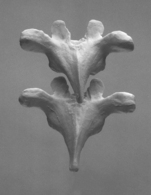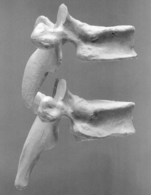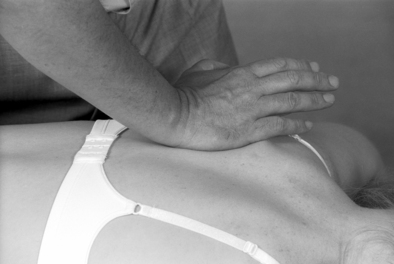9.4 Thoracic spine T4–9
Rotation gliding
Assume somatic dysfunction (S-T-A-R-T) is identified and you wish to use a rotation gliding thrust, parallel to the apophysial joint plane, to produce joint cavitation at T5–6 (Figs 9.30, 9.31).
4 Operator stance
Stand at the left side of the patient, feet spread slightly and facing the patient. Stand as erect as possible and avoid crouching as this will limit the technique and restrict delivery of the thrust.
5 Palpation of contact points
There are many different ways to perform this technique. This is one approach. Locate the transverse processes of T5 and T6. Place the hypothenar eminence of your right hand against the left transverse process of T5 and establish a firm contact (Fig. 9.32). Place the hypothenar eminence of your left hand against the right transverse process of T6 (Fig. 9.33). Ensure that you have good contact and will not slip across the skin or superficial musculature when you apply downward and caudad or cephalad forces against the transverse processes. Maintain these contact points.
Stay updated, free articles. Join our Telegram channel

Full access? Get Clinical Tree















